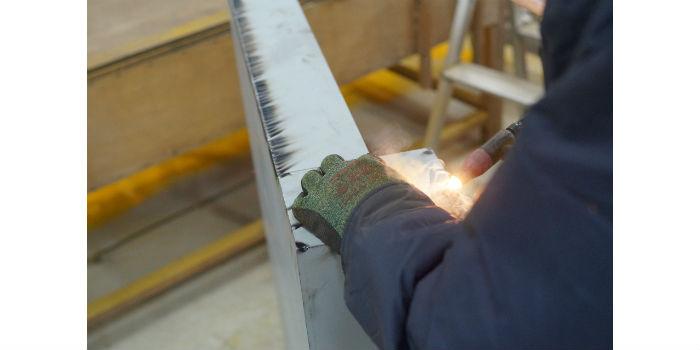 International. The pace of global manufacturing growth has slowed, mainly as a result of trade and tariff barriers, according to the International Yearbook of Industrial Statistics 2019 published by the United Nations Industrial Development Organization (UNIDO).
International. The pace of global manufacturing growth has slowed, mainly as a result of trade and tariff barriers, according to the International Yearbook of Industrial Statistics 2019 published by the United Nations Industrial Development Organization (UNIDO).
Global manufacturing value added increased by 3.6% in 2018, slightly lower than the 3.8% recorded the previous year. The slowdown is mainly due to emerging trade and tariff barriers involving the US and China, as well as the US. And the European Union (EU), which has exposed markets to a significant amount of uncertainty, limiting investment and future growth. China, the EU and the United States account for more than half of the world's manufacturing output.
The slowdown in output in 2018 was observed in industrialized economies, as well as in developing and emerging industrial economies. The manufacturing value added (MVA) growth rate for industrialized countries increased by 2.3 percent in 2018, compared to 2.6 percent in 2017. For the group of developing and emerging industrial economies, the MVA growth rate in 2018 was 3.8 percent, down from 4.1 percent in 2017.
In North America, manufacturing output maintained relatively higher growth, mainly thanks to the US, where manufacturing output increased at a higher rate of 3.1% in 2018, compared to 1.8% in 2017. However, in the European Union and East Asian countries, the growth rate of manufacturing slowed, from 3.5 percent to 2.6 percent, and from 3.1 percent to 1.9 percent, respectively.
The International Yearbook of Industrial Statistics 2019 also presents data at the manufacturing sector level by country. For example, if China is excluded from a global ranking of developing countries, Indonesia ranks first among the manufacture of food and rubber and plastic products, while India ranks first in the production of textiles, pharmaceuticals and base metals. Similarly, Bangladesh remained the largest producer of garments.
The overall structural change in manufacturing was characterized by the increasing share of high-tech sectors in manufacturing output. For example, the medium-high and high-tech sectors accounted for more than 75 percent of Singapore's manufacturing. Japan and the Republic of Korea were among other leading manufacturers in high-tech sectors.
African countries continue to struggle in their efforts to catch up with the industrial development of the rest of the world. The average share of manufacturing in the GDP of the least developed countries in Africa (LDCs) has fallen further to 8.3 per cent compared to the average of 19.6 per cent for developing countries and the emerging industrial economies group. This represents a serious challenge to the Sustainable Development Goal 9 target of doubling MVA's share of GDP in LDCs by 2030.
The UNIDO Yearbook presents detailed country-specific business structure statistics that provide empirical evidence for industrial policy formulation and comparative analyses of structural change and productivity. Quarterly reports provide an analysis of current growth trends in global manufacturing.
The World Economic Forum identifies 16 of the world's most advanced smart factories, the so-called production sites of the Fourth Industrial Revolution. The Danfoss factory in Wuqing, China, is one of them. Read why
At Danfoss' compressor factory in Wuqing, China, guided vehicles automatically roam aisles and supply components to workers. The same workers use Bluetooth-connected smart tools that automatically tell you if an assembly process is done incorrectly. They also have access to step-by-step electronic job descriptions, no matter where they work in the factory on a given day.
The list of smart technologies, in which the factory has invested in recent years, is very long. In addition, the investment has paid off. Compared to two years ago, employee productivity increased by 30 percent, scrap costs decreased by 20 percent and customer complaints by 57 percent.
And now, Danfoss in Wuqing has entered the World Economic Forum's list of the 16 smartest factories in the world. The Forum identifies a smart factory as one that is not only good at adopting smart technologies, but also at turning investment into operational and financial benefits.
Making the list, the Forum has selected from a pool of more than 1,000 factories.
"Representatives of the World Economic Forum recently audited our site for a full day. We are very proud of the result, of having achieved it in this final list. It is a clear testament to the fact that our digitization effort has also paid off in terms of productivity, quality improvements, and customer satisfaction. We will continue to add new technology, so we are constantly improving in these areas," says Senior Director of Operations Ruixing Zhang, Danfoss in Wuqing.
The World Economic Forum released the list of the 16 smart factories on Jan. 10 until its 2019 annual meeting in Davos, Switzerland. The current list is an update of a previous list published in September last year that contains nine start-up companies.
With the initiative, the World Economic Forum has created a network where industrial companies can share experiences on the technology of the Fourth Industrial Revolution and learn from each other. Read more here.
At Danfoss we work with digitalization at all levels of the organization, and we invest heavily in this area, to make sure we're ahead of the curve and meet our customers' expectations and demands. That's why we are very proud to be recognized for this," says Kim Fausing, President and CEO of Danfoss.
Danfoss commercial compressors are used in refrigeration and refrigeration systems worldwide.
Helena Leurent, Director of the Shaping the Future of Production System Initiative, World Economic Forum: "The 16 selected factories are leaders in the technologies of the Fourth Industrial Revolution. "They create value and resilience across the supply chain, and agility and responsiveness for customers."














